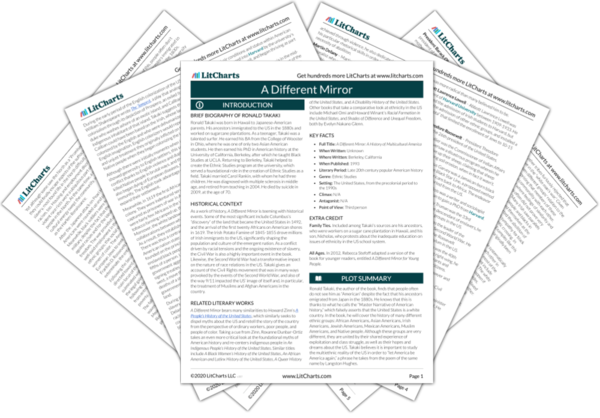The railroad is one of the most key pieces of industrial infrastructure in American history. Built by ethnic groups including African Americans, Mexicans, and the Chinese, the railroad symbolizes how the labor of people of color literally built the nation, transforming it into a thriving, modern, technologically advanced country. The railroad allowed people and goods to travel across the US, which in turn significantly shaped the possibilities that existed in the country—including the fact that such a large, diverse area could operate as one nation. Yet the railroad also encapsulates the dark side of this form of labor, which was highly dangerous and underpaid, despite being so crucial to the nation’s functioning. Moreover, the railroad also symbolizes the destructive and unjust colonization of land that belonged to indigenous people. It was thanks to the railroad that the frontier could be closed and all of the US settled. Indeed, Takaki describes how Native people were essentially tricked into giving up their land as part of the Indian New Deal, and how railway lines were subsequently built through it. The railroad is thus an ambivalent symbol of American progress, which illuminates how the construction of the nation simultaneously meant the destruction of land, people, and ways of life.








